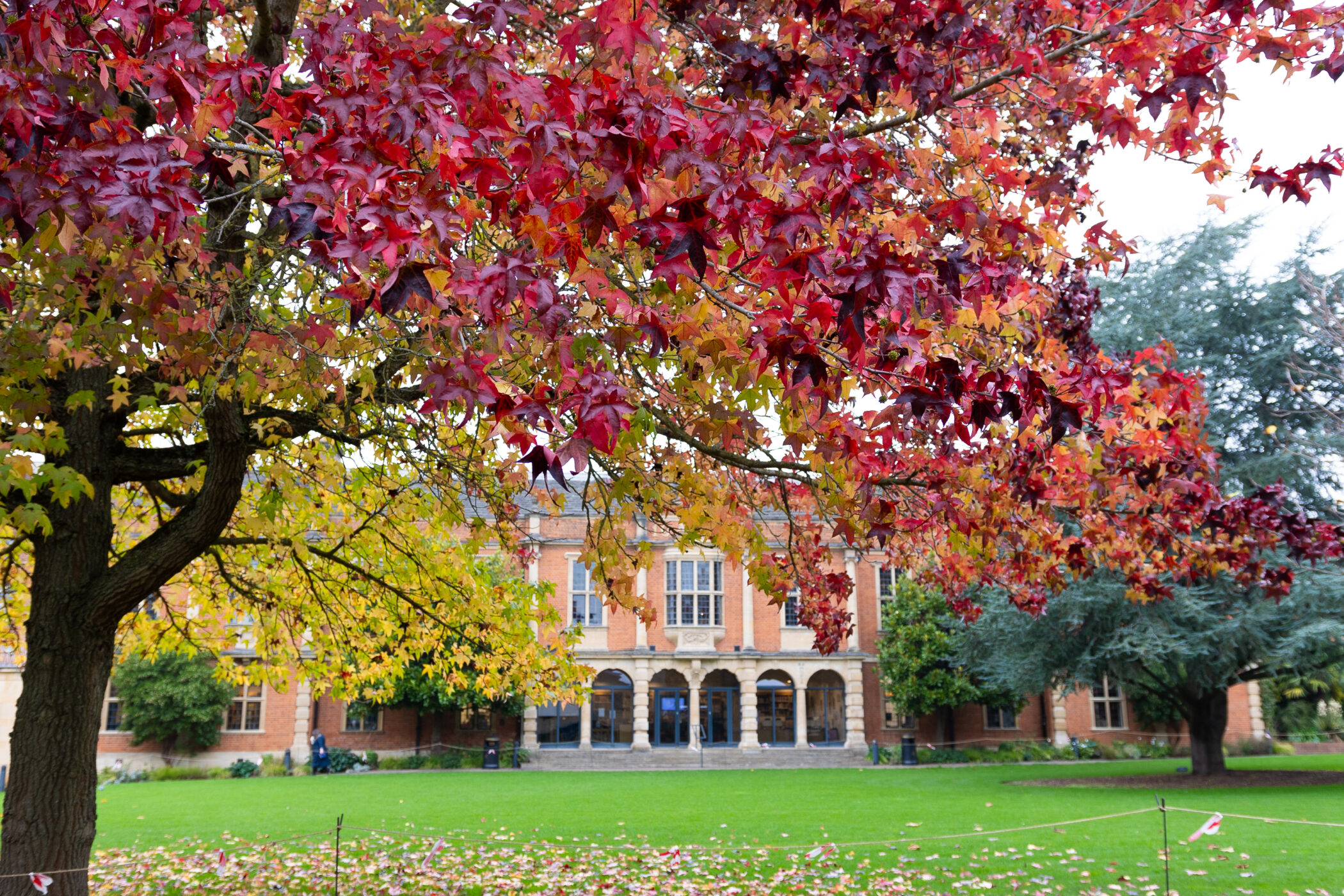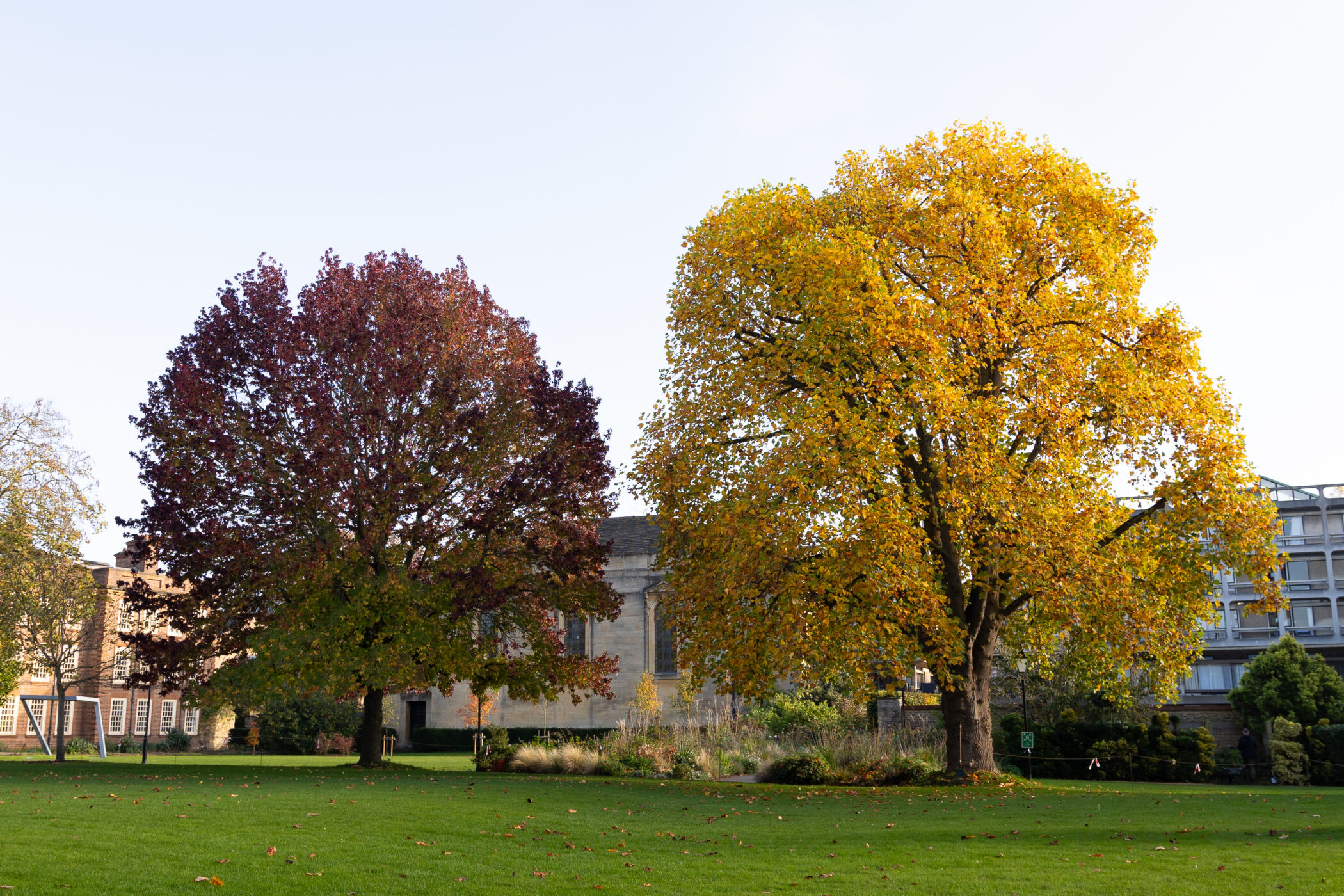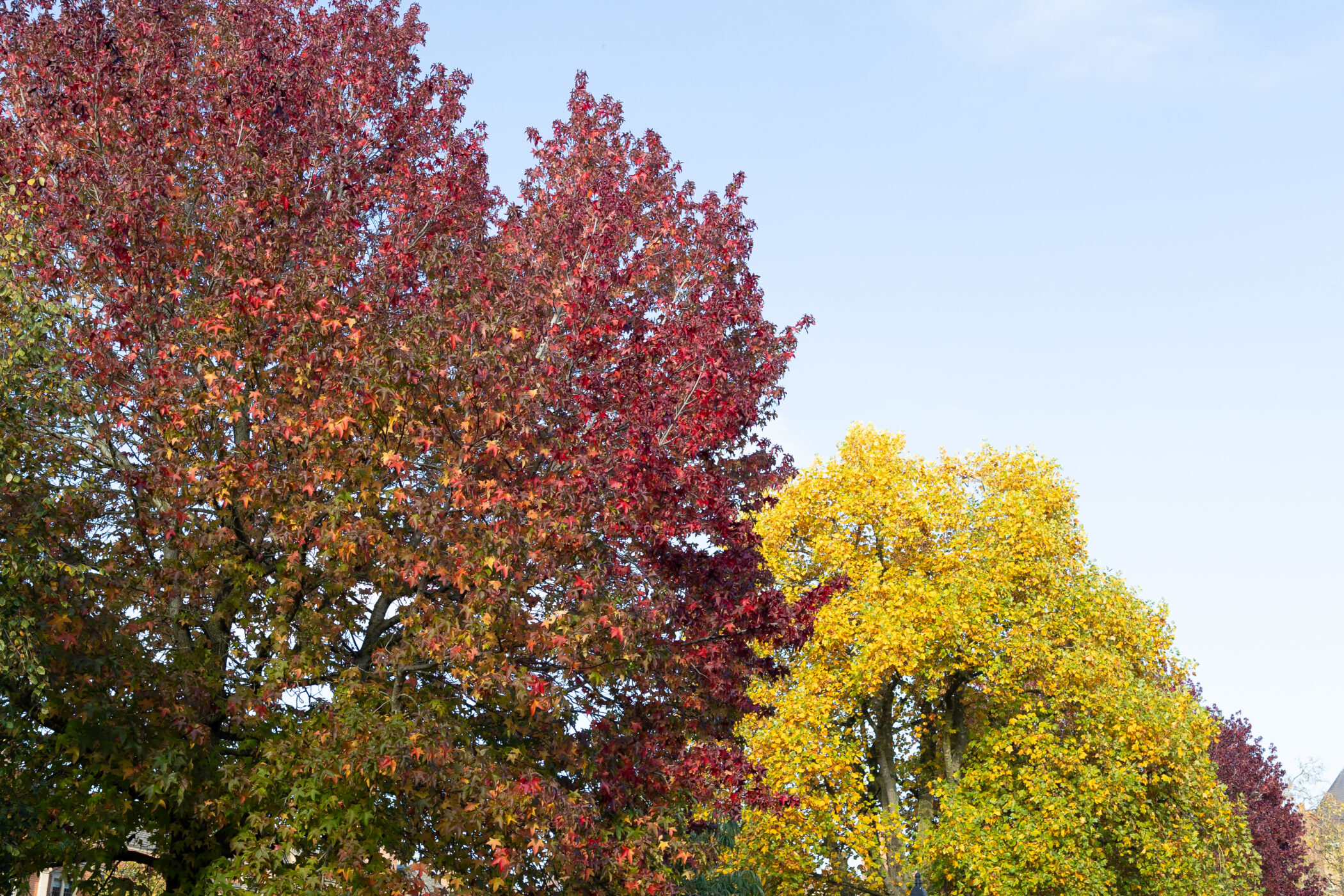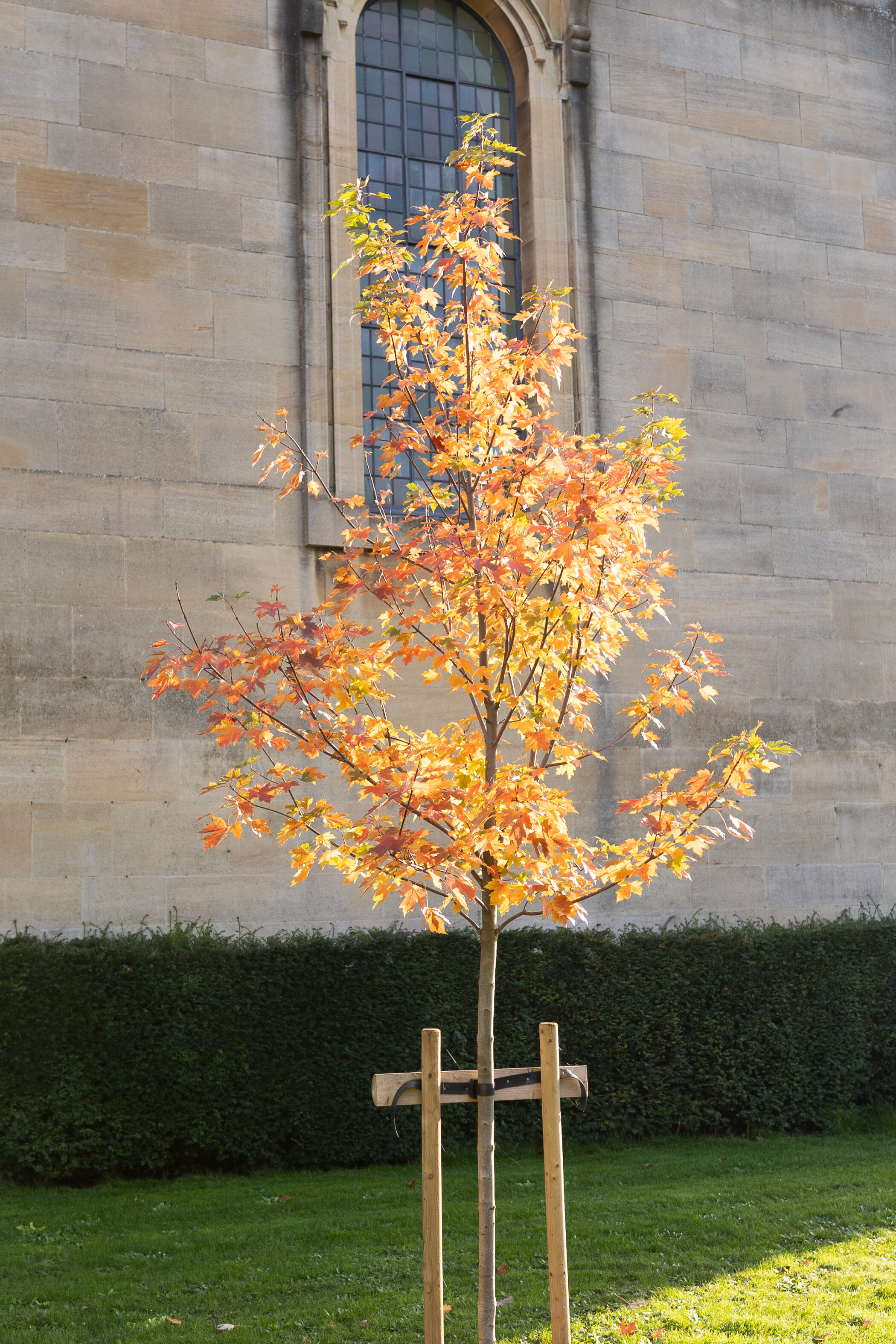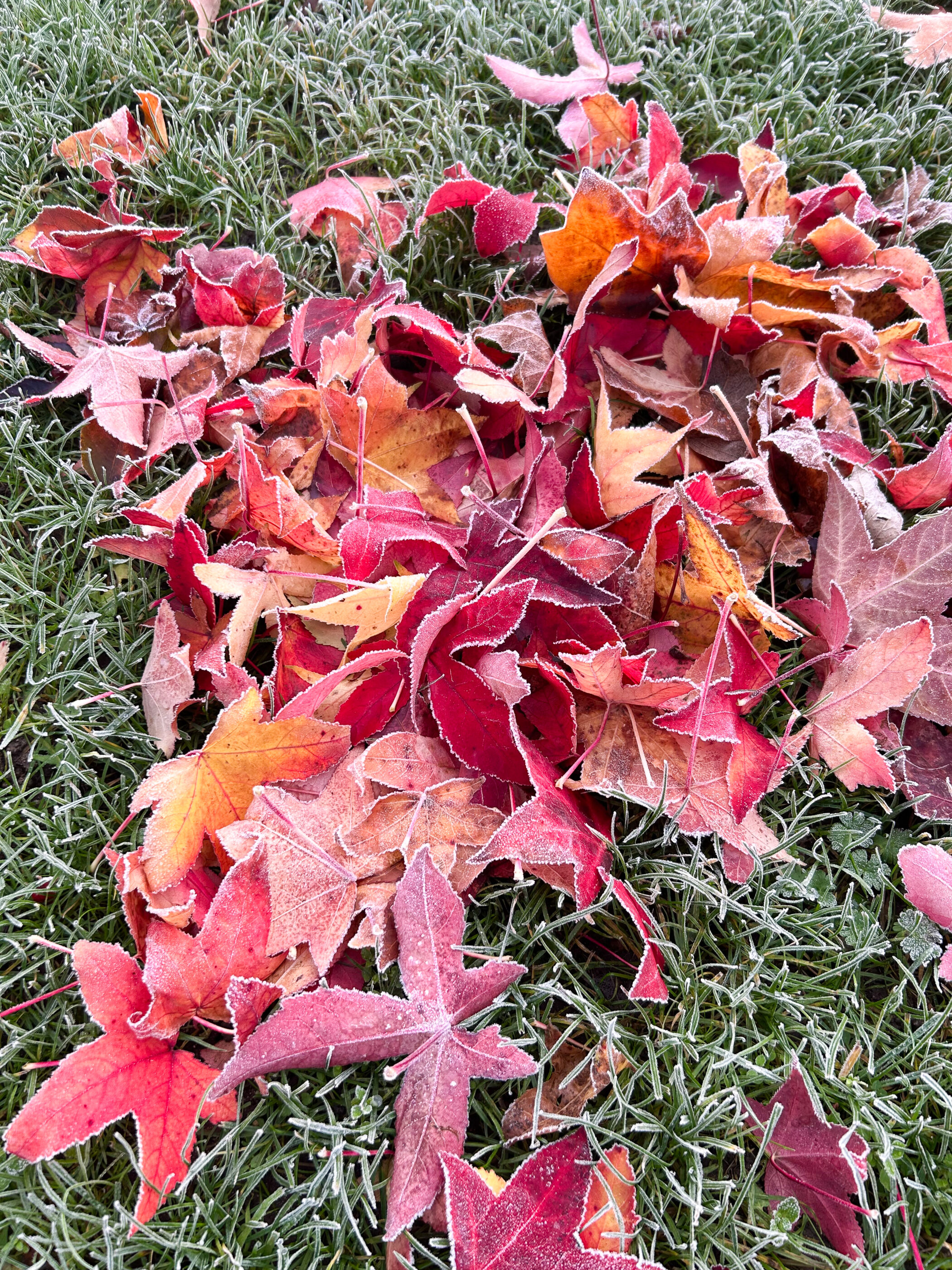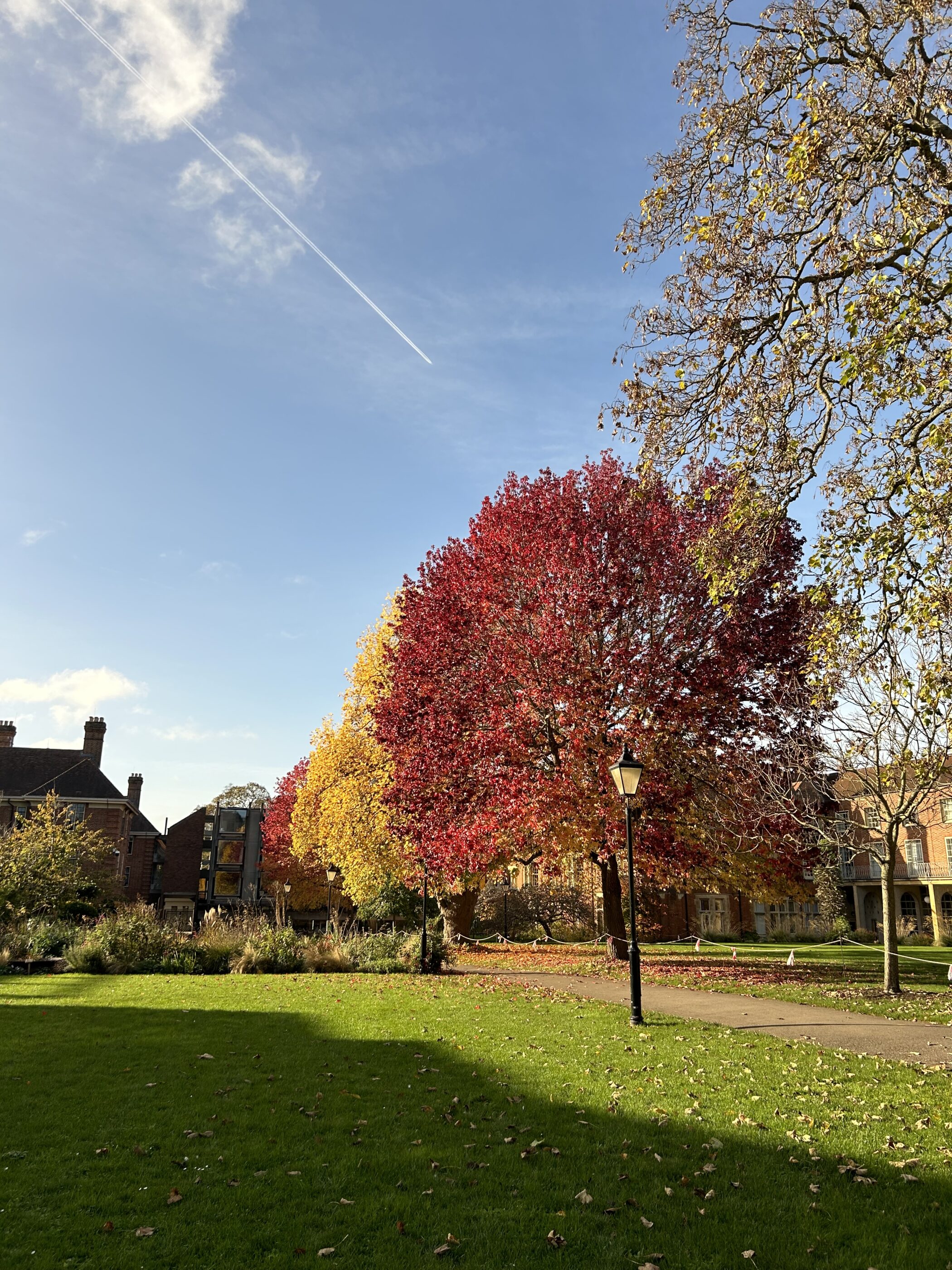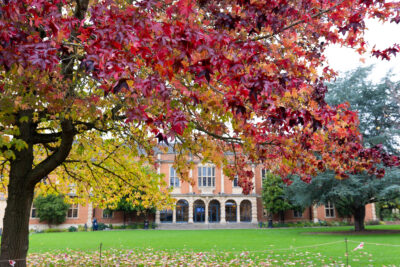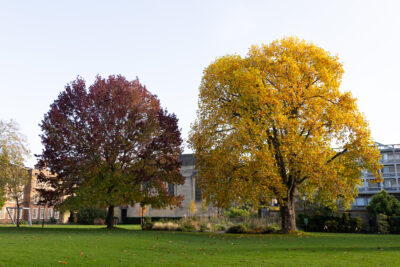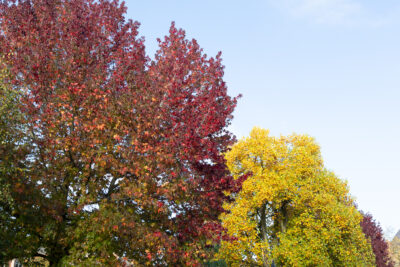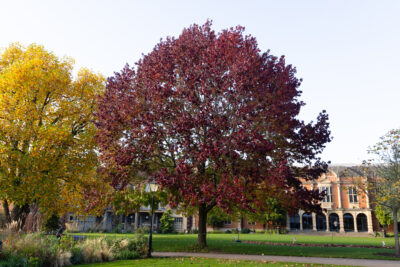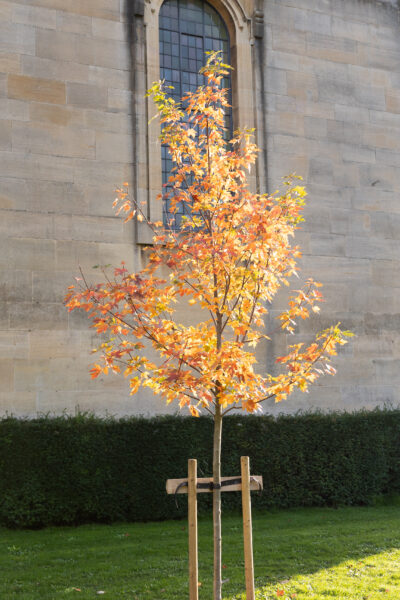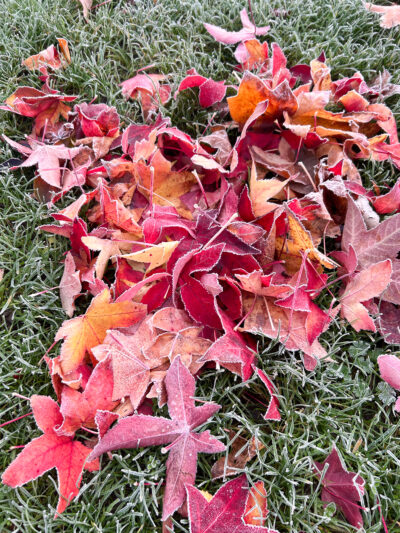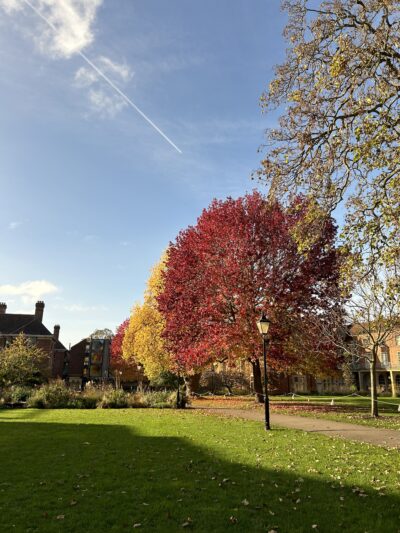Our gardener Anna returns with another fantastic blog about Somerville’s gardens.
Leaf drop has been late this year; the colour is still holding on many of our college trees. I invite you to take a journey through our trees with this blog, and some stunning images.
We have almost fifty trees in the college grounds. Many go unnoticed in many ways – during the spring and summer months, their green canopy is often taken for granted when compared to the splendour of the borders. Their importance to the planet is well documented and discussed by those better informed then us. Our need for them psychologically is also well known, as well as, as a species, our all-round interest and fascination with them, which our own fellow Fiona Stafford conveys beautifully in her book, The Long, Long Life of Trees, which we heartily recommend.
At present trees are one of the most endangered organisms on the planet with 38% being on the extinction list. The garden team have been taking this to heart and new trees are being planted as often as possible. Out of the 47-50 college trees, there are 27 in main quad, and it is one of these we are concentrating on today. Liquidambar is a deciduous tree and therefore has something of the ethereal, transitional, the colour we seek so much at this time of year.
When talking about colour, Liquidambar is the tree that holds the crown in our main quad (although the new trees on the chapel border are likely to catch up soon). Its changing hues in reds, yellows, rusts, umbers and golds are a gorgeous almost firework display and still hold on to its leafy finery as the colours change.
The name liquidambar styraciflua (also known as Sweet Gum) has a fun scientific/botanical history. When broken down it is a mixture of Latin and Arabic, using the Latin ‘liquidus’ (‘fluid’) and Arabic ‘ambar’ (‘amber’) as well as Latin or Greek in ‘styraciflua’ (‘flowing with resin’). In short, the name translates to the present-day equivalent – ‘fluid perfume, flowing with resin’. Liquidambar styraciflua is easier to remember – but we digress. Back to the tree itself.
A native North American, the species was brought over by plant collectors in the 1500s. Originally its resin was used medicinally, as well as a chewing gum – hence the so-called ‘common name’ Sweet Gum.
It is rather a seasonal tree for its chemicals as well as its colour. Its seeds are a renewable source of shikimic acid. This chemical is used to synthesize the active agent for Tamiflu, an influenza prophylactic.
You could write a book about this tree. But our reason for discussing this particular specimen is its autumnal display, and the reason behind the display as well as its purely aesthetic appeal.
Most people know and understand the process of photosynthesis (how plants breathe – in brief). Chlorophyll, the part of plants cells which allows them to absorb energy from light, is also responsible for giving the tree leaves their green foliage in spring and summer. Until recently, we thought the remaining colours were due to the breakdown of chlorophyll. Now, however, we understand that the colours revealed in the leaves once the chlorophyll is broken down were always there. They are permanent pigments that also photosynthesise, and these colours are better suited to working in the lower light levels at the end of the trees season, before it drops the leaf completely.
Whatever the reason for the colour, their beauty is undisputed.
